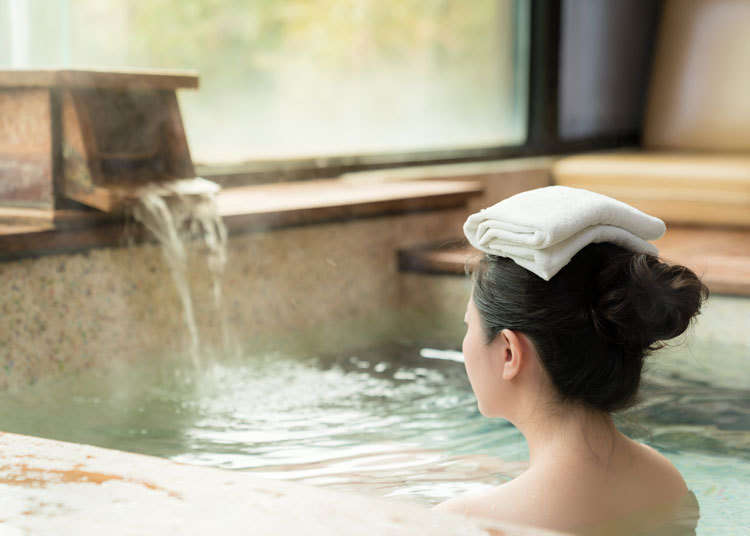
Hot springs, known as onsen in Japan, can be found everywhere in the island nation, from coast to coast. Since times of yore, these natural bathing facilities have been extolled for their health and onsen beauty benefits, which are further enhanced by peaceful surroundings and lovely views.
It's no wonder that large groups of people flock to them at all times of the year. Each hot spring in Japan boasts a certain quality and health effect unique to the region they reside in, and getting to know some basic onsen etiquette will enable to fully enjoy your hot spring experience at any facility in Japan.
To help you get even more from the soak, here are some essential beauty tips everyone can try out at a hot spring, no matter your age or nationality, as suggested by Ms. Hiroko Ishii. Ms. Ishii is an onsen beauty expert whose life work involves traveling around the country and staying in different onsen facilities to do research on their health benefits, and she's eager to share her findings with us!
By thus equipping ourselves with basic knowledge about the Japanese onsen, we put ourselves in the best position to enjoy the experience from its very core. Let's start by taking a look at some hot spring rules that are designed to enhance health and beauty as well!
- Table of Contents
Warming up with kakeyu - pouring of hot water on the body
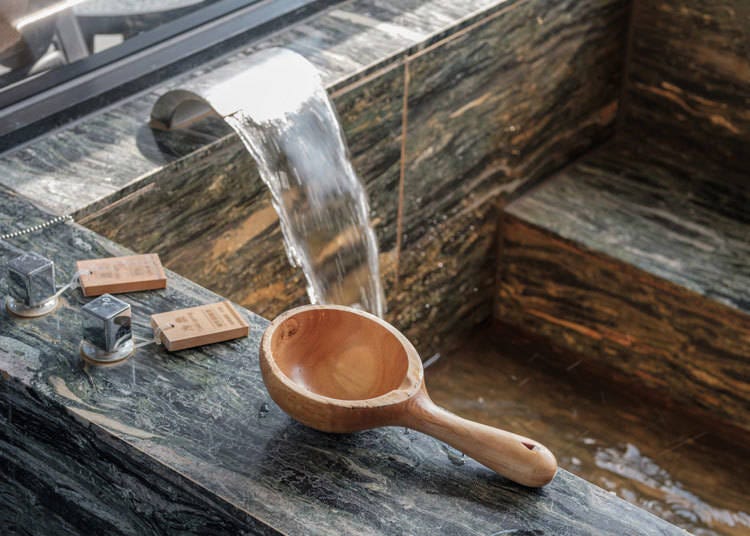
Japan's onsen water temperature hovers between a toasty 39C to 42C (102F to 107F), a range that Japanese locals feel most comfortable with. However, the temperature may seem hotter than it is if you enter the hot spring when your body is not properly warmed up yet. The solution? A warm-up activity called kakeyu!
Kakeyu translates to "the pouring of hot water", and that's exactly what you'll be doing! Use warm water scooped up from the hot spring itself. Here's the sequence to follow: Start with your right foot, then left foot, right knee, left knee, right waist, left waist, stomach, right shoulder, left shoulder, and finally, your back - 10 spots in all. Since onsen water has a cleansing effect, pouring it on the body helps to remove surface dirt from it as well.
Kakeyu is part of the regular pre-bath routine in Japan, but don't think of it as simply a rule to follow. Doing it removes dirt from the body and serves as a warm-up exercise that helps you get acclimatized to the temperature of the spring water. Following this routine maximizes your enjoyment of the bath.
Frequent short soaks to prevent fainting spells from staying in the bath too long
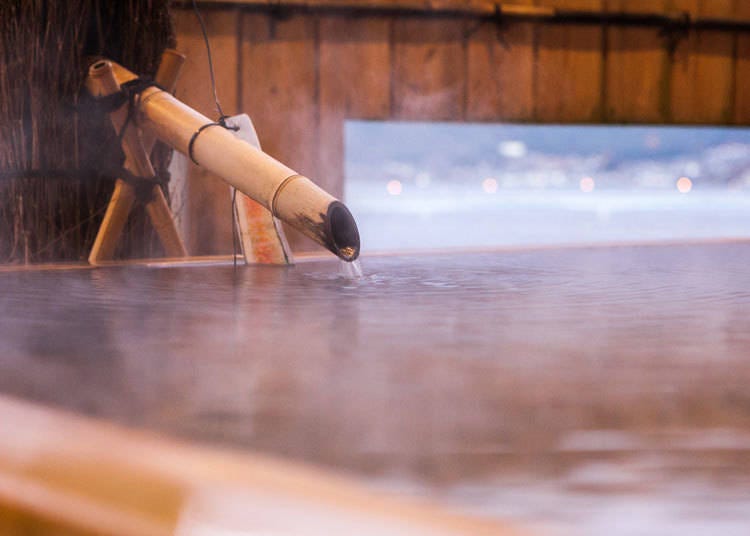
As mentioned before, Japan's onsen water is generally on the hotter side and loaded with mineral components. The best way to fully benefit from a bath is to avoid soaking for a long time at one go. Take frequent shorter soaks instead so as to prevent fainting from the lightheadedness long soaks generally cause.
Additionally, we recommend soaking in the onsen bunkatsuyoku-style. The phrase, which literally means "segmented bathing", encourages people to soak for about three chunks of five minutes instead of 15 minutes at one go. This warms up the entire body from inside out. Five minutes is just a guide and the actual timing may differ from person to person, but a good way to gauge is to exit the bath when you start perspiring slightly.
Hydrate well before the bath!
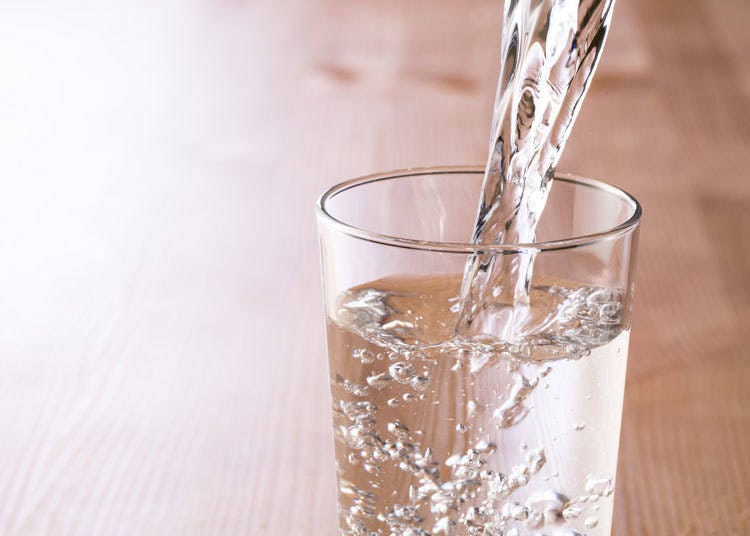
Hydration is an important factor to consider if you want to maximize an onsen's beauty and health benefits, so drink up before stepping in! Plenty of plain water or tea will be good enough to keep your blood flowing smoothly, enabling your body to better receive the benefits an onsen has to offer. This hydration slowly permeates the body in about 15 minutes on average, improving blood circulation as it goes along, which helps to improve the flow and efficiency of the health components found in hot springs as well!
There's also the fact that you'll sweat a lot in the hot spring once the heat starts warming up your core, and you may keep sweating even after coming up from the bath, so don't forget to rehydrate after every onsen session as well!
Improve metabolism with a contrast bath
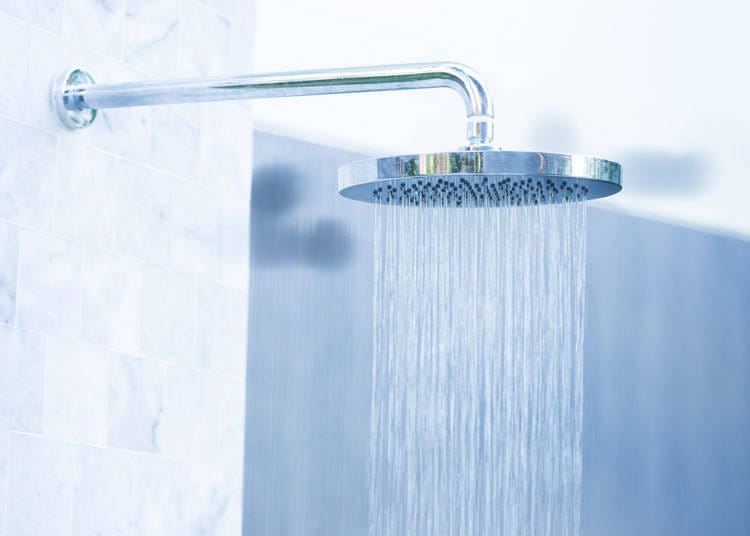
Looking for a way to relieve bodily fatigue and refresh your skin at the same time? Try the contrast bath. It's simpler than it sounds, really. Here's how to do it!
After coming up from a hot spring bath, hop into a cold tub if one is available, or take a cold shower. After that, hop into a hot spring bath again. The contrast between hot and cold will promote better blood flow and improve your metabolism rate.
This has a good effect on relieving fatigue and aids with weight loss as well. Yet another beauty tip to keep in mind for your onsen adventures!
Do your own onsen beauty treatment at home with souvenirs from the hot spring!
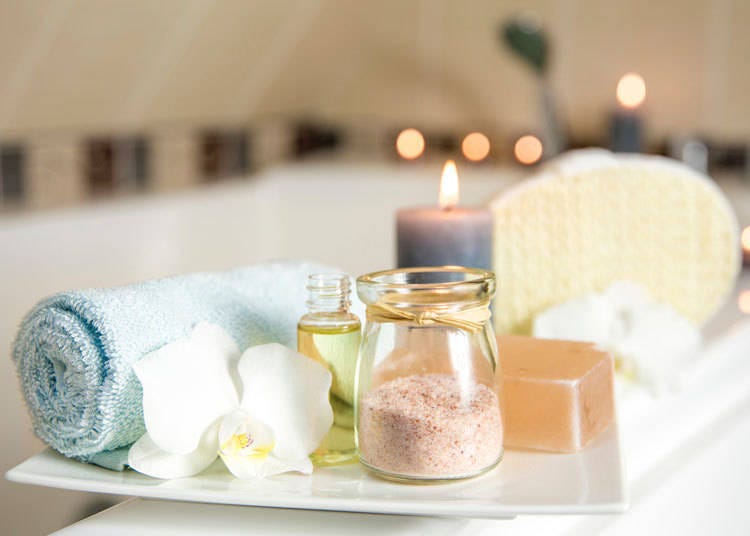
Hot spring resorts usually sell bath lotions or body wash made with components found in the hot springs of that particular region, so you may want to check out the souvenirs section of the resort when you're visiting to see what they have to offer. Some places even sell bottled hot spring water! There's really nothing quite like enjoying a natural hot spring bath in the comforts of your own home.
Although natural hot spring water is rich with minerals that are good for the body, some of their components are not ideal for regular home use. For example, sulfur will damage bathroom drainage or bath heaters, so it's not often used in bath agents. Although sulfur has a good effect on blood circulation, carbon-rich gas similarly promotes good blood flow as well. Also, there are bath salts that have the effect of warming up the body, like carbonated spring water.
Plenty of research and development is being done on reproducing the exact effects of onsen components in the form of bathroom-friendly bath salts. As such, there is a wide variety of bath salts available in Japan, particularly carbon-based ones.
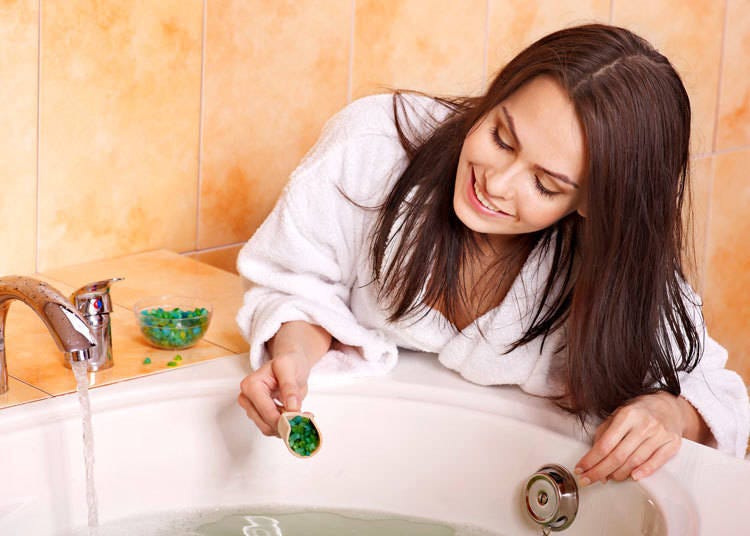
Bath salts featuring local onsen components can be easily found in pharmacies or drug stores as well. You can basically buy a series of these regional onsen-based bath salts without visiting the places themselves. It's definitely worth it for bath fans who want to have the full onsen beauty experience anytime they like without having to travel to faraway places!
That said, the unique environment at a Japanese onsen is really enough to make the trip to one a worthwhile and enjoyable experience, but go just a little further and add cultural customs like pouring hot water before entering the bath, shorter soaks, or contrast bathing to the mix to enhance the health and beauty benefits you can reap! It doesn't take very much extra effort at all and we definitely recommend trying them out on your next onsen adventure.
Written by Naho Jishikyu. English translation by Huimin Pan.
- Area
- Category
*Prices and options mentioned are subject to change.
*Unless stated otherwise, all prices include tax.
Popular Tours & Activitiess
Recommended places for you
-

2025 Autumn Colors Report: Kurobe Gorge Nearing Peak
by: Timothy Sullivan
-

[Extended Offer!](12% OFF KKday Coupon) Mt. Fuji Autumn Leaves, Powder Snow & More! 15 Best Tours to Experience Japan in Fall & Winter
-

LaLaport TOKYO-BAY North Building Now Open: Shop, Dine & Enjoy Events at LaLa arena, Just 2 Stops from Disney
by: Wemmy Chau
-

Black Friday 2025: These Are THE Japan Travel & Shopping Deals to Check Out
-

New Seibu L00 Series Launching in 2026! What to See Along the Tokyo-Area Golden Route
by: Guest Contributor
-

A Travel Game Changer! Go Hands-Free Between Tokyo and Kyoto with LUGGAGE EXPRESS by JTB and JR Tokai
by: Guest Contributor
Inspiration for Accommodations
-

Enjoy Mt. Fuji from the Comfort of Your Room! Recommended Ryokan with Mt. Fuji View
-

Stay Near the Cherry Blossoms! Hotels for Cherry Blossom Viewing in Tokyo
-

Family-Friendly Hotels with Free Shuttle to Disneyland: Convenient Access for a Magical Stay
-

Top Ranked Hakone Hotels with Mt. Fuji View: Enjoy Stunning Scenery from Your Private Space
-

Convenient Tokyo Hotels with Airport Shuttle: Ideal for Families and Heavy Luggage
-

Stunning Tokyo Tower View Hotels: Enjoy Spectacular Scenery from Your Private Space
-

Convenient Asakusa Hotels with Kitchens: Ideal for Extended Family Visits
-

Experience Luxury: Hakone's 10 Best Five-Star Accommodations
-

Enjoy Mt. Fuji Autumn Leaves! Top Hotels Near the Popular Autumn Leaves Corridor
-

Experience Hakone Fall Foliage from Your Room with Stunning Views
-

Tokyo's Top Three Natural Hot Springs: Soak your Body!
-

Tokyo Onsen: Beautify Your Skin at Tokyo's Top 3 Kuroyu Black Hot Springs!
-

Atami 1-Day Itinerary: Exploring Japan's Castle & Hot Springs Resort Town Near Tokyo!
-

Onsen Ryokan Yuen Shinjuku: Enjoy An Authentic Onsen Stay Right in The Heart of Tokyo!
-

8 Unfamiliar (But Totally Normal) Customs in Japan!
-
Ad

Discover Tokyo’s Best-Kept Secret: The Allure of Sento Baths
by: Yohei Kato
- #best ramen tokyo
- #what to buy in ameyoko
- #what to bring to japan
- #new years in tokyo
- #best izakaya shinjuku
- #things to do tokyo
- #japanese nail trends
- #what to do in odaiba
- #onsen tattoo friendly tokyo
- #daiso
- #best sushi ginza
- #japanese convenience store snacks
- #best yakiniku shibuya
- #japanese fashion culture
- #best japanese soft drinks


















